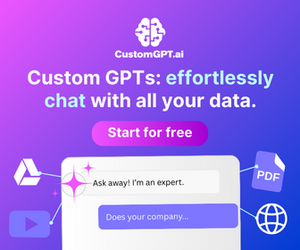-
Table of Contents
- Mastering AI-Powered Checkers: A Comprehensive Guide
- Understanding the Basics of AI Checkers
- How AI Checkers Work
- Benefits of Using AI-Powered Checkers
- Real-World Applications
- Challenges and Limitations
- Overcoming Challenges
- Best Practices for Using AI Checkers
- Case Study: Grammarly
- Future Trends in AI Checkers
- Ethical Considerations
- Conclusion
Mastering AI-Powered Checkers: A Comprehensive Guide

Artificial intelligence checkers have revolutionized the way we approach problem-solving, decision-making, and quality assurance in various fields. Whether you’re a developer, a business owner, or a student, understanding how to effectively use these tools can significantly enhance your productivity and accuracy. This article will guide you through the essentials of artificial intelligence checkers, providing actionable insights and practical advice to help you overcome common challenges.
Understanding the Basics of AI Checkers
Before diving into advanced applications, it’s crucial to grasp the fundamental concepts behind AI checkers. These tools leverage machine learning algorithms to analyze data, detect errors, and provide recommendations. They are widely used in areas such as grammar checking, code review, and fraud detection.
- Grammar and Spell Checkers: Tools like Grammarly use AI to identify and correct grammatical errors, enhancing the quality of written content.
- Code Review Tools: Platforms such as GitHub’s CodeQL employ AI to detect bugs and vulnerabilities in software code.
- Fraud Detection Systems: Financial institutions use AI checkers to identify suspicious transactions and prevent fraud.
How AI Checkers Work
AI checkers operate by processing large datasets to learn patterns and make predictions. For instance, a grammar checker analyzes millions of sentences to understand proper syntax and context. Similarly, a fraud detection system examines transaction histories to spot anomalies. The effectiveness of these tools depends on the quality of the data they are trained on and the sophistication of their algorithms.
Benefits of Using AI-Powered Checkers
Incorporating AI checkers into your workflow offers numerous advantages. These tools can save time, reduce errors, and improve overall efficiency. Here are some key benefits:
- Enhanced Accuracy: AI checkers can identify errors that might be overlooked by human reviewers.
- Time Efficiency: Automating repetitive tasks allows you to focus on more strategic activities.
- Cost Savings: Reducing errors and improving efficiency can lead to significant cost savings in the long run.
Real-World Applications
AI checkers are being used across various industries to solve complex problems. For example, in healthcare, AI-powered diagnostic tools help doctors identify diseases more accurately. In education, AI checkers assist students in improving their writing skills. These applications demonstrate the versatility and impact of AI checkers in real-world scenarios.
Challenges and Limitations
While AI checkers offer numerous benefits, they are not without challenges. Understanding these limitations can help you use these tools more effectively.
- Data Quality: The accuracy of AI checkers depends on the quality of the data they are trained on. Poor-quality data can lead to incorrect results.
- Bias: AI algorithms can inherit biases present in the training data, leading to unfair or inaccurate outcomes.
- Complexity: Some AI checkers require technical expertise to set up and use, which can be a barrier for non-technical users.
Overcoming Challenges
To mitigate these challenges, it’s essential to use high-quality data, regularly update your AI models, and seek expert assistance when needed. Additionally, being aware of potential biases and taking steps to address them can improve the fairness and accuracy of AI checkers.
Best Practices for Using AI Checkers
To maximize the benefits of AI checkers, follow these best practices:
- Choose the Right Tool: Select an AI checker that aligns with your specific needs and requirements.
- Regular Updates: Keep your AI models and tools updated to ensure they remain effective.
- Human Oversight: While AI checkers are powerful, human oversight is still necessary to catch errors that the AI might miss.
Case Study: Grammarly
Grammarly is a prime example of an AI checker that has transformed the way people write. By providing real-time feedback on grammar, spelling, and style, Grammarly helps users improve their writing skills. The tool’s success lies in its ability to learn from user interactions and continuously improve its recommendations.
Future Trends in AI Checkers
The field of AI checkers is constantly evolving, with new advancements on the horizon. Here are some trends to watch:
- Increased Personalization: Future AI checkers will offer more personalized recommendations based on individual user preferences and behaviors.
- Integration with Other Tools: AI checkers will increasingly integrate with other software and platforms, providing seamless user experiences.
- Enhanced Capabilities: Advances in AI technology will enable checkers to handle more complex tasks and provide more accurate results.
Ethical Considerations
As AI checkers become more prevalent, it’s important to consider the ethical implications. Ensuring transparency, fairness, and accountability in AI algorithms is crucial to building trust and avoiding harm.
Conclusion
Artificial intelligence checkers are powerful tools that can significantly enhance your productivity and accuracy. By understanding their capabilities, benefits, and limitations, you can use these tools more effectively. Remember to choose the right AI checker, keep it updated, and maintain human oversight to achieve the best results. As the field continues to evolve, staying informed about new trends and ethical considerations will help you stay ahead of the curve.
For further reading, check out our articles on AI in Education, AI in Healthcare, and AI Ethics. Additionally, explore external resources like IBM’s AI Insights, Google AI, and OpenAI for more in-depth information.



Leave a Reply